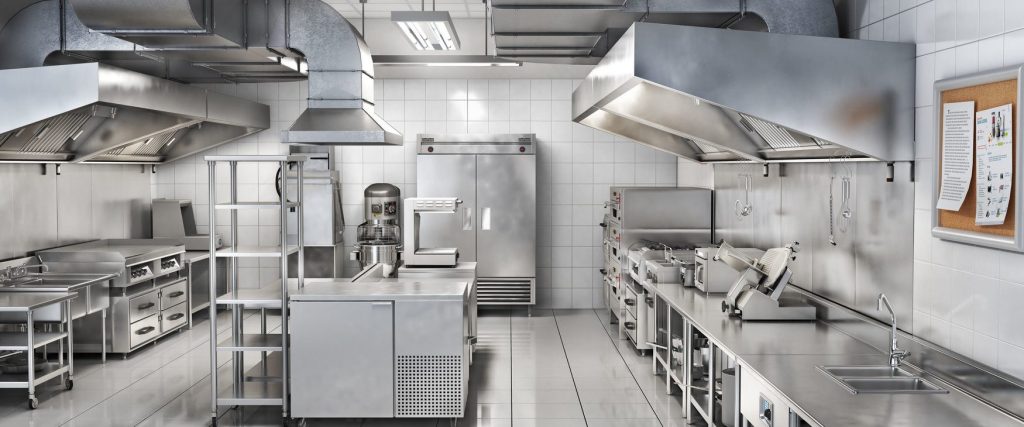As a business that serves food, providing clean and spot free wares is critical to customer satisfaction. Over 80% of consumers say that dirty wares have a negative impact on their dining experience when eating out. Consumers associate spotty wares with dirt and carelessness, discouraging them from dining at the same place again.
Providing your customers with the best dining experience means ensuring they will have spot free wares every time. Clean wares will help you retain customers and grow repeat business. But for some businesses, achieving those spot free wares can be a costly, time-consuming challenge.
What Causes Spotty and Dirty Wares?
Many facilities that have to rewash wares typically believe that their commercial dish detergent is the leading cause of spotty or dirty wares.
However, unclean wares most often occur as a result of the wrong combination of water, chemicals, and temperature.
Proper machine calibration is key to achieving clean & spot free wares in one pass.
Properly calibrated warewashing equipment will dispense the correct amount of chemicals, release the optimal amount of water, and reach recommended temperatures to help you achieve clean dishes on the first pass.
If your dish machine is not properly calibrated, it may require you to send your dishes through the dish machine two or even three times to get clean dishes.
Wares that are cleaned in one pass will save your business time and money. One pass washing can help you to lower costs in nearly all parts of your warewash program. A one-pass wash system can help reduce overall warewash costs up to 20%.
In this article, we will go over the three components of a properly calibrated commercial dishwashing machine:
- Temperature
- Chemical Dispensing
- Water Pressure
1. Temperature
There are two types of commercial dish machines: high temperature and low temperature.
Maintaining the correct temperature of your wash cycles is critical to the success of your warewashing program.
Wash temperatures will determine how much chemical product needs to be dispensed.
Most machines will have the temperature displayed on the front of the machines.
Most high-temp dish machines should have a wash temperature between 140 – 160+°F and a final rinse temperature between 180 – 195°F. Most low-temp dish machines should have a wash and rinse temp between 120 – 140°F.
Proper cycle temperatures are also critical in ensuring that your wares are meeting the required sanitation temperature.
If your machine is not running in the right temperature range it is not producing the best level of clean and failing to meet sanitation guidelines.
2. Chemical Dispensing
Low and high temp machines dispense chemicals in two different ways.
On a low-temp machine, a timer is usually responsible for releasing the chemical. It should be calibrated to release as little chemical as possible while still being able to achieve clean wares and properly sanitize.
On a high-temp machine, an externally mounted controller is usually responsible for releasing the proper chemical amount.
A probe can be attached to help moderate how much chemical needs to be released. If the probe fails to properly measure the alkalinity of the water it can deliver the wrong dosage causing your dish machine to be using too much or too little chemical.
Too little chemical will leave your dishes spotty or unclean requiring you to send them through the wash cycle again. More wash cycles will require more chemical, water, energy, and labor, ultimately driving up your overall warewashing program cost.
On the other hand, too much chemical causes the cleaning product to go to waste. It also reduces the number of washes you get before having to replace your commercial dishwashing detergent and other cleaning chemicals.
3. Water Pressure
Your commercial dishwashing machine has dish arms, wash arms, and rinse jets that can get dirty or obstructed. Clogged jets cannot successfully remove dirt and grime from your dishes.
Rinse jets and wash arms are essential to the cleaning process by directing water under high pressure to remove food particles and stubborn baked on grime from dishware, utensils and other wares.
To make sure water is dispensing at the right pressure, check the wash/rinse arms and jets for a buildup of food, soap residue, lime scale, or other soil accumulation.
If there is buildup, follow the manufacturer’s guidelines for the right cleaning process and correct cleaning chemical to remove the blockage.
To prevent buildup from occurring, you should clean your commercial dishwasher daily. Refer to the manufacturer’s guidelines for proper maintenance procedures.
Final Thoughts
Wares that aren’t cleaned on the first pass are increasing your costs, lowering customer satisfaction, and hurting your business’ image.
The best way to make sure you are getting clean and spot free wares in one pass is with proper machine calibration.
Proper calibration of chemicals, water, and temperature will lower your chemical, water, and energy costs. It will also lower labor costs.
The biggest cost of your warewashing program is labor. When your employees have to spend time washing the same dishes more than once, they lose time which could be used to complete other tasks.
If you’re not getting spot free dishes on the first pass, your warewashing program is costing you more than it should.
Let us help you get your costs under control.
Imperial Dade offers a full line of superior products, quality control testing, innovative dispensing systems, and unparalleled service & training to help you achieve maximum operational efficiency in your warewashing program.
Contact an Imperial Dade Specialist for a free assessment of your commercial warewashing equipment and evaluate your machine’s current performance. The Specialist will check for proper machine calibration and recommend the best products and procedures that will help you get clean and spot free wares on the first wash.
